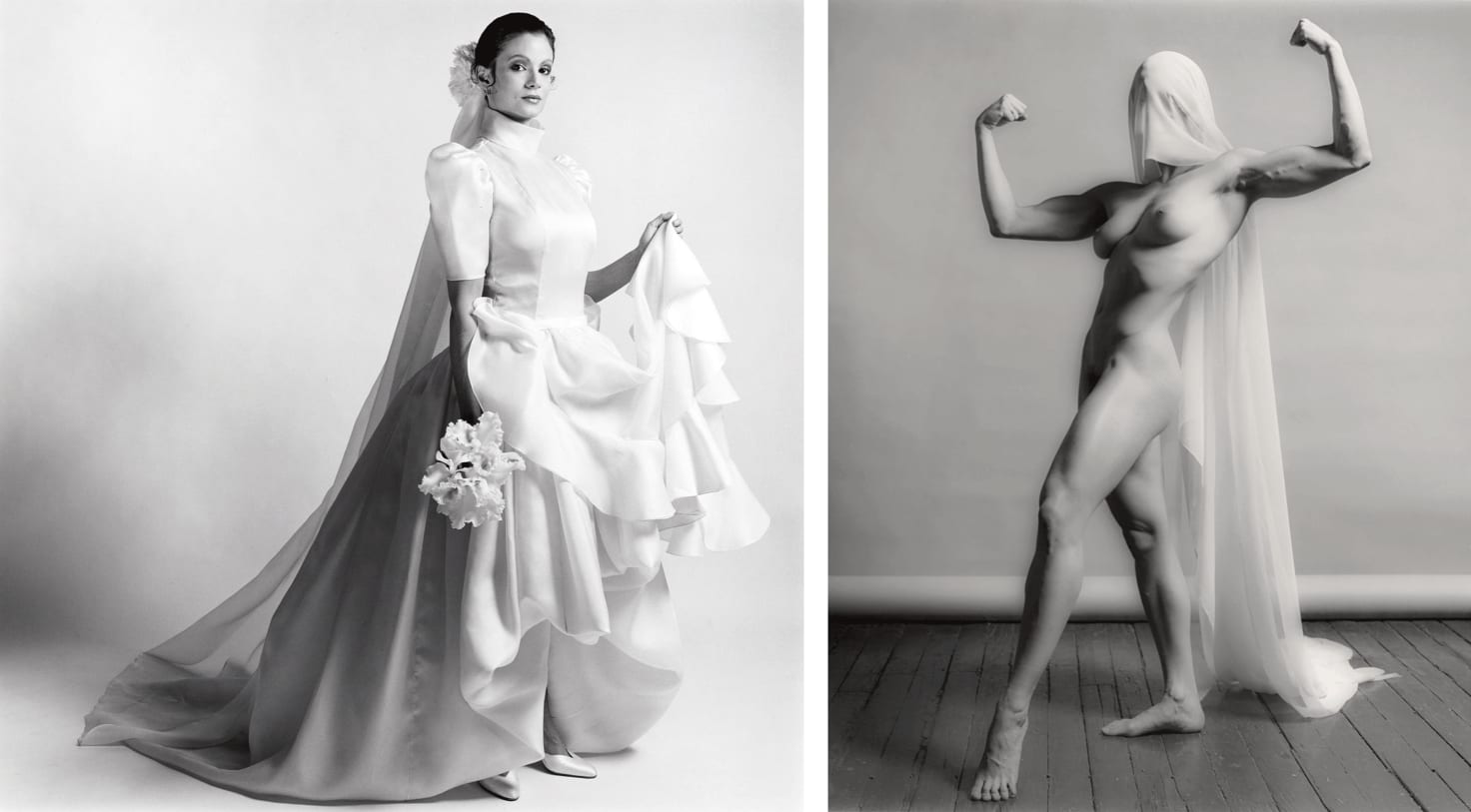Radical glamour: Edward Enninful curates Robert Mapplethorpe

Radical glamour: Edward Enninful curates Robert Mapplethorpe
For his first curatorial project, British Vogue’s former editor-in-chief takes a deep dive into the legendary photographer’s archive
Edward Enninful needs no introduction. A towering figure in the fashion industry, the influence of the Ghanaian-born British stylist and editor rippled far and wide even before he took the top job at British Vogue in 2017. Now, having become the Global Creative and Cultural Advisor for the legendary glossy, he has turned his hand to curating.
For his first exhibition, which opens at Thaddaeus Ropac’s gallery in the Marais in Paris on March 2, Enninful was invited to explore the archive of the Robert Mapplethorpe Foundation. He approached it as an editor would, choosing to pair images as if for double-page spreads. The resulting combinations – sometimes delicately harmonious, sometimes daringly jarring – fizzle with the radical glamour that characterizes both Mapplethorpe and Enninful’s creative output. The selection also perfectly encapsulates the work’s sensuous aestheticism, mordant humor, and deep-seated belief that beauty comes in many forms.

‘Mapplethorpe is a photographer I got to know about the minute I started out in the fashion industry at 16 years old. I feel like his work has been with me on my whole journey for over 30 years. I remember thinking that there was such beauty in his images. I was introduced to The Black Book (1986) first, and I was just mesmerized by his use of lighting, his use of shadows. When I looked at Mapplethorpe’s work, I could see myself reflected in some of the subjects he chose to photograph, which was new for me. To be asked to curate this amazing body of work was something I couldn’t say no to. I felt very safe in my knowledge of his work, and that I could relate to him as a gay man, and as a man in this world.

‘Mapplethorpe’s work is very considered. Everything is well-thought-out. Everything seems meticulous. Every detail of a flower, or flower arrangement – they don’t just happen accidentally. I really love that about his work; nothing is left to chance. You can tell the months and weeks – and the thought processes – that went into each single image. Nothing is thrown away. I feel like that’s something I can really relate to.
‘When I first started to narrow down the images, I chose pictures that resonated with me – images that were so powerful that they had to be in the exhibition. It wasn’t until I got to the gallery in Paris and saw them together that I realized that they actually tell a story of pairs – that when you put them together, there is another level to the storytelling of his photography. It didn’t start like that, but the minute I saw everything together and the power of those images, I knew that was it. I’ve worked in magazines my whole life, and I always see things in pairs, so that idea felt very instinctive and true to me. And it offers, I hope, quite a new way of seeing his work.

‘There’s a lot of humanity in Mapplethorpe’s portraits, which I am really drawn to. And no matter who he’s photographing, I feel there’s always a palpable sense of the person coming through the image. It’s not just a surface thing. In the pictures we selected, we really loved the ones where Lisa Lyon is semi-naked, but wearing the most beautiful hat, with a little rose adornment. There are a lot of moments that are very tender: when she’s wearing the white wedding dress, looking slightly uncomfortable, and then the wedding veil which plays beautifully on her naked body. I love this aspect of his work as well – the quiet that sits so well with the big, bodacious moments.

‘I’ve been an editor my whole life, so it was very important for me to explore the fashion side of the exhibition. It’s what I grew up admiring. And in Mapplethorpe’s work, I love his fashion images because they’re not the norm. He still treats his subjects like portraiture. The best photographers I’ve worked with are very much the same. They construct the picture and build their subjects into characters in their photos. So for me, there had to be elements of that running through the exhibition.

‘Mapplethorpe’s archive is vast as you can imagine – I literally went through thousands of images. I spent days and days, editing down to the perfect number we now have in the exhibition. What I really wanted to show was that Mapplethorpe wasn’t just one thing. I’m always interested in ideas of beauty, what people see as beautiful, what people don’t see as beautiful. We laid everything out on the floor, and we started pairing some of the moodier images with fashion images, fashion images with wild florals, and it was almost like a jigsaw puzzle. It came together quite quickly, and like any true artist, there is a clear thread through the work. There was a line that I didn’t even know existed until I started looking at everything and realized how one picture works with another in terms of color, shape, or story.

‘Doing this project, I was reminded how varied and broad Mapplethorpe’s work is. I think a common misconception is that it is just one thing, but his spectrum is so vast. I really wanted to show people that there is more to it, and I hope that’s something that I’ve been able to achieve with this curation of his work.’
‘Robert Mapplethorpe curated by Edward Enninful’
Thaddaeus Ropac Paris Marais
March 2 – April 6, 2024
Published on February 28, 2024.
Full-bleed image: Edward Enninful, 2023. © Adama Jalloh. Courtesy of Thaddaeus Ropac gallery, London, Paris, Salzburg, Seoul.


Comments